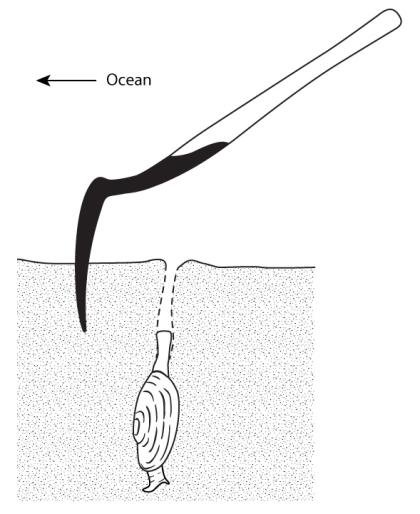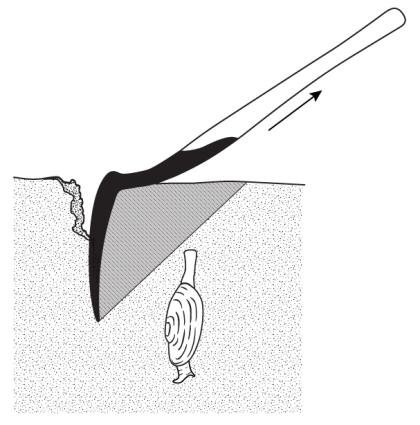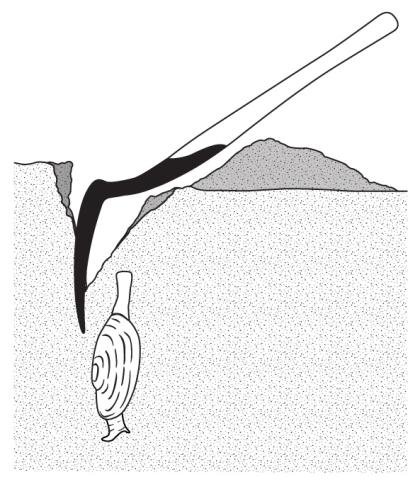Traditional Harvest: S'axwa'
Hwlhuw’ut tsun tse’ tthu s’axwa’ – I am going to shuck clams
The importance of clams to Coast Salish people cannot be overestimated. Not only are these beautiful little bivalves a great source of nutrition, but they have a huge cultural role to play as well.
Thousands of Years of History
Historically, the Coast Salish have been harvesting clams for thousands of years; clam digging was a productive activity resulting in a large harvest. They were the main shellfish gathered and eaten – in fact they were so important that some communities selected village sites based on access and proximity to nearby clam beds. The shellfish were eaten raw, boiled, baked, steamed, roasted and dried, and the shells themselves were used as tools or utensils.
Such an abundant harvest meant that the clams could not only be prepared and stored, but also traded with other Nations. And of course, the community bond and connection is strengthened and teachings passed on as families participated in harvesting, preparing, and eating the clams together.
Harvesting
Coast Salish communities gathered clams mainly during the winter when food sources were low or hunting and fishing activities were challenged by poor weather. Many communities created “clam gardens” – building up rock walls at low tide points to create a better habitat for clams to grow. Archeologists have detected evidence of clam garden sites in some communities that date back 4000 years. These methods of harvesting are still in use today.
Depending on the location and quality, it was preferable to visit clam beds a few times per year rather than take one large harvest. This was especially true for the months when clams were dried and stored in large quantities for winter provisions and trade.
Women would dig up the clams and collected and carried them in large woven baskets made of cedar. The large basket was carried on their back and supported with a forehead band. To protect their backs from cold water draining out of the baskets they wore waterproof mats. Men would sometimes join in the harvest, especially during the winter when the harvest occurred at night.
Preparation
Clams were initially cleaned in the collecting basket in the sea. Water ran through the basket, rinsing off the sand and keeping them fresh for several days. If the clam beds were a fair distance from the village, the clams would be cleaned and steamed on the beach.
A popular cooking method was steaming or baking in a pit. A fire was made in a shallow hole that was dug in the ground and covered with rocks. When the fire began to die, the pit was lined with large leaves. The clams were added and the pit was filled with more leaves and some water, and it was covered with mats or earth and left to cook. Although this method was lengthy, taking from 1 to 6 hours, it was very useful since the clams did not to be watched and could be left alone while people tended to other tasks. Some Coast Salish people referred to the pit as an “imu” and sometimes built a fire on top of the covered pit instead of the inside. Different foods could be steamed in the pit at the same time. Seaweed, different leaves, or berries were sometimes added for flavour.
To prepare clams for winter, they were cleaned, steamed shucked and strung or skewered onto sticks and roasted before drying or smoking them. Steaming and roasting clams prior to drying was a very effective method of preservation. Cured clams were stored in a dry place in large wooden boxes, sometimes with oil, or tied together and hung from the roof.
How do you gather clams?
Go at low tide. Look for the “clam show” – these are dimples or holes in the sand where the clam has dug in.
Using a shovel place the blade 4-6 inches seaward of the clam hole. The handle should be pointed towards the shore.
Push the shovel straight down into the sand and begin removing sand upward and forward until you reveal the clam shell.
Pull the clam/s up and place in a container.
Image from Washington Department of Fish and Wildlife (https://wdfw.wa.gov/fishing/basics/digging-razor-clams)






